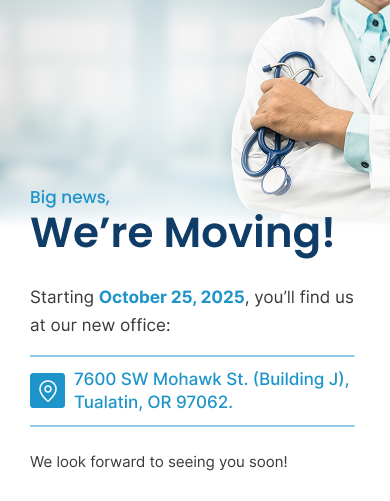You’re walking across the room or going for a run when suddenly—pop! That unexpected sound or sensation coming from your knee can be surprising or even concerning. Knee popping, clicking, or cracking noises are common, but when they’re paired with pain, stiffness, or swelling, it may signal something more serious like a ligament injury or muscle imbalance.
In this article, we’ll look at why knees pop, how it relates to issues like an ACL injury, runner’s knee, and tight quadriceps, and what you can do to strengthen and protect your knees
Understanding Knee Popping and Clicking
Knee noises, such as a knee cap click or clicking patella, often come from air bubbles in the joint fluid or movement of soft tissues over bones. These sounds alone aren’t always a problem. However, if you’re experiencing knee pain with clicking noise or knee clicking every step, it’s time to pay closer attention.
Common Causes of Knee Clicking
Tight or imbalanced muscles (especially the quadriceps and hamstrings)
Misalignment of the patella
Cartilage wear or small tears
Old injuries or repetitive stress from running
A knee click when extending or bending could also be related to inflammation in the joint capsule or tendons around the knee.
Could It Be an ACL Tear?
Sometimes, popping in the knee is linked to ligament damage—particularly an ACL injury. The anterior cruciate ligament (ACL) stabilizes the knee during movement, and when it’s torn, a popping sound is often the first sign.
Can You Walk on a Torn ACL?
Many people are surprised to find they can still move their leg after injury and wonder:
Can you walk with a torn ACL?
Can you walk on a torn ACL after a week?
Can you still walk if you tear your ACL?
Can you walk if you tore your ACL?
The truth is, yes—you can sometimes walk with an ACL injury, especially after swelling decreases. However, walking with a torn ACL doesn’t mean the knee is stable. The joint may buckle or feel weak because the ligament can’t control movement properly.
Even if you’re walking with torn ACL or testing gentle motion, you should avoid heavy activity. Trying to run with a torn ACL can cause further damage to surrounding cartilage or the meniscus.
Walking and Running After ACL Injury
If you’re wondering can you still walk with torn ACL or can you walk on an ACL tear, the short answer is that mild walking might be possible—but running is not recommended.
Physical therapists often design gradual recovery plans that start with gentle range-of-motion work and progress to knee strengthening exercises for runners later on. Trying to run with a torn ACL too soon can lead to long-term instability or re-injury.
If you suspect a tear, seek professional diagnosis before resuming normal activity.
Quadriceps Tightness and Knee Pain
Not all knee pain or popping comes from ligaments. Sometimes, tight quads knee pain or an overly tense quadriceps muscle can pull on the kneecap, causing friction and clicking.
A quadriceps stretch knee pain routine can improve flexibility and reduce strain. These quad stretches for bad knees also support proper patella tracking, helping minimize that familiar pop or grinding sound.
Effective Quadriceps Stretches
Standing quad stretch: Pull your foot gently toward your glutes while keeping your knees aligned.
Side-lying quad stretch: Lie on one side, hold your top foot, and stretch the front of your thigh.
Knee pain stretching quads routine: Add gentle hip flexor stretches to balance front and back leg muscles.
Regular stretching reduces muscle tension and helps prevent runner’s knee—a condition where the kneecap rubs against the thigh bone due to muscle imbalance.
Runner’s Knee and Exercise-Related Pain
If you’re a runner and your knees ache or pop, you might be dealing with runner’s knee, also called patellofemoral pain syndrome. It’s often caused by repetitive motion, weak supporting muscles, or poor running mechanics.
Best Stretches for Runner’s Knee
Stretches for runners knee: Include IT band stretches, hamstring releases, and calf mobility work.
Knee stretches for runners knee: Focus on loosening the front and outer thigh to relieve kneecap pressure.
Stretching exercises for runners knee: Combine stretching with strengthening for lasting relief.
Runner knee stretches and stretches for sore knees from running: Ideal post-run recovery options.
Stretches for knee pain running and stretches for runners knee pain: Reduce inflammation and stiffness after intense activity.
Consistency with runner knee exercises and knee strengthening exercises for runners helps stabilize the joint and prevent recurring pain.
How to Strengthen Knees for Running
Prevention is key. Strong muscles protect your joints and reduce injury risk. If you’re asking how to strengthen knees for runners, focus on exercises that build stability and balance.
Knee Strengthening Routine
Step-ups – Strengthen the quads and glutes.
Wall sits – Improve endurance in the front thighs.
Bridges – Activate the glutes, which support the knee during runs.
Knee running exercises – Low-impact drills like cycling or pool jogging help maintain strength safely.
These exercises not only prevent pain but also correct muscle imbalances that lead to knee popping or clicking sensations.
When to See a Specialist
While mild clicking or popping is usually harmless, seek medical advice if you experience:
Persistent knee pain with clicking noise
Swelling or instability
Trouble walking even short distances
A popping sound followed by pain or weakness (possible ACL tear)
A professional evaluation can determine if your symptoms stem from muscle tension, ligament injury, or cartilage wear.
Final Thoughts
Knee popping can come from many causes—from tight quads and runner’s knee to serious injuries like an ACL tear. Whether you’re asking can you walk with a torn ACL, can you still walk if you tear your ACL, or dealing with clicking patella, understanding what your body is telling you is key.
Focus on flexibility, strength, and form. Incorporate stretches for runners knee, quadriceps stretch knee pain routines, and knee strengthening exercises for runners into your week. And if your knee continues to pop, click, or ache—don’t ignore it. With proper care, your knees can stay strong, steady, and pain-free for years to come.


